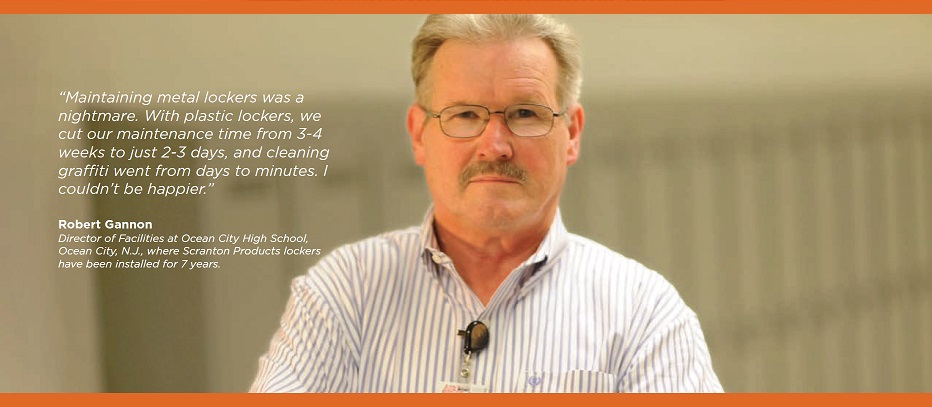Lets talk about janitors, you know, those guys and gals, who are always there, on the ready with a sponge, broom or mop, just when you need them. They are in our schools all year long, available for any size clean up, taking care of the spills our kids make in the lunchroom, classroom and hallways. They go about their business undetected, coming out when needed. But do you know one of the ways they spend their summer (that coveted time of the year when your kids are home with you)? We do – they clean what they couldn’t clean during the year, the student’s lockers!
Making The Move Away From Metal
While we are spending our 3 months of summer relaxing at the beach, and eating ice cream, the school janitorial staff is cleaning up from the previous 9 months while school was in session. Schools with metal lockers have a regularly scheduled task associated with those lockers during the summer months, debridement of rust, dent repairs, chemical cleaning of graffiti and surface repainting. Lockers take a beating during the school year, with books being banged around, food deposits and spills, and not to mention, the dreaded odors of smelly, sweaty gym clothes. The labor-intensive cleanup task is costly to the school district, in several areas including labor, materials, and air & surface quality. As you can see, traditional metal lockers require extensive care and maintenance, and still don’t meet the needs of the busy school environment. But, we have a solution, Duralife Lockers® made with HDPE (High Density Polyethylene).
Duralife Lockers® are specifically designed to meet the durability and environmental demands of today’s busy schools. Made with solid-core HDPE, these lockers are impact, scratch and dent resistant, and hold up to the toughest student use. Graffiti readily wipes off the non-porous surface, and because they are impervious to moisture, Duralife Lockers® will never rust, corrode or delaminate. In addition, the HDPE surface does not harbor mold, mildew or bacterial growth, and the lockers can be fully power-washed or steam-cleaned. In short, with Duralife Lockers® you can say goodbye to rust, mold, graffiti, scratches, dents, and worrisome bacteria, and say hello to years of worry-free, low maintenance.

*Testing conducted by SiTU Biosciences LLC by the ISO 22196 methods
Sleek Modern Design For The School Hallways Of Tomorrow
When it comes to design, the modern sleek, simple lines of the Duralife® Locker line, make them a polished and aesthetically pleasing addition to any school hallway. They can really kick it up with their color options that bring high style to any atmosphere. The sustainability and durability stand up over time, making them a smart investment for today and tomorrow.
So Show Your Janitors Some Love This Summer – Invest In The Smart Choice – Duralife Lockers®
Download our brochure and see for yourself how HDPE Duralife Lockers® compare to traditional metal lockers – and Show Your Janitor Some Love This Summer!

